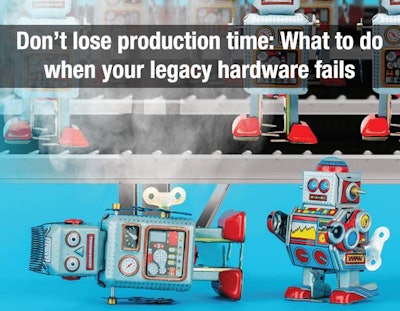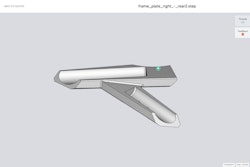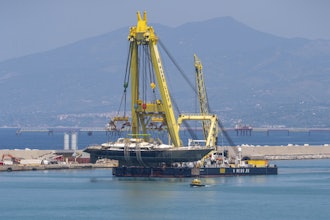
www.stromasys.com
Why Waiting for It to Break
Doesn’t Make Sense
WHITE PAPER
Tackling the Challenges of
Legacy Hardware Failure
www.stromasys.com
When it comes to legacy systems, there are many variables: what hardware you’re using,
the legacy operating system running on top of it, and the application(s) running on top
of that. You continue to maintain your legacy system for the reason that it is essential to
your business. It is likely mission critical, and it enables your employees to accomplish
organizational goals.
Yes, there are a lot of variables when it comes to legacy systems. All legacy systems
have at least one thing in common, and it’s a very important—perhaps the most
important—factor: these legacy systems are aging.
As legacy systems grow older, they become less reliable. The lifetime of the hardware is
limited, and the software and applications that run on top of it tend to have substantially
longer lifetimes—often as much as three to five times the lifespan of the underlying
hardware. You may already be encountering hardware failure or an increased need for
hardware support. You may have searched for replacement parts or begun to investigate
alternatives. And if you haven’t yet had hardware difficulties, you are aware that it’s
only a matter of time.
For many companies, time is a major part of the problem. Knowing that it’s only a
matter of time means that there is still time, at least for now; companies de-escalate
the project’s importance in favor of projects that feel more urgent. We encounter many
companies saying versions of the following: “This isn’t a problem for us right now; we’ll
check in later.” In so doing, they put it off while they can and push ahead elsewhere.
The reality, though, is that when legacy hardware does fail, companies find themselves
wishing they’d planned ahead. When legacy hardware breaks, there’s no longer any
time at all: getting the system up and running again is urgent, and it’s crucial to the
company’s success.
So why do so many companies find themselves in this position? Why do businesses
wait to adopt a plan for their legacy systems when there is revenue and even liability
at stake? In this white paper, we address the most common reasons companies put off
securing their legacy systems, and we cover why having a plan is the best way forward.
We discuss the costs associated with waiting and how they regularly impact business.
Finally, we share best practices for how your business can develop a customized plan to
ensure that your legacy system becomes a source of business opportunity and improved
ROI rather than a ticking time bomb.
The reality, though, is that when legacy hardware does fail, companies
find themselves wishing they’d planned ahead. When legacy hardware
breaks, there’s no longer any time at all: getting the system up and
running again is urgent, and it’s crucial to the company’s success.
www.stromasys.com
Why Companies Wait
Despite the risks associated with hardware failure, many companies put off taking next
steps to secure the future of their legacy systems. Why?
Budget
Cost is typically the largest obstacle. Budgets are limited, and getting approval to
further invest in legacy systems can be difficult. Often little or nothing is allocated for
these backroom systems and, let’s face it, it’s not the most glamorous project to which
a business can commit funds. In many cases the IT department has a track record of
getting by with spare parts off eBay—small, incremental investments that have worked
up to now—and it gives the impression of being easier on the purse strings than what
a long term solution might cost.
Priority
Amid the challenges associated with keeping businesses up-to- date on the technology
landscape, legacy system maintenance tends to fall on the backburner. It’s not trendy,
it’s not new, and the jobs legacy systems do are often, while mission critical, taken for
granted. And, of course, there’s the “if it ain’t broke, don’t fix it” mentality at work. As
long as the legacy system continues to run, other areas take priority.
In many cases the IT department has a track record of getting by with
spare parts off eBay—small, incremental investments that have worked
up to now—and it gives the impression of being easier on the purse
strings than what a long term solution might cost.
Why You Can’t Wait
Ultimately, waiting comes at a cost. In many cases, the cost of waiting is greater than
the cost of investing in a long-term solution. Here’s why you can’t wait:
The system is critical
When it comes down to it, your business needs this system. It’s critical for the success
of your operations and organization. If the system fails, you’re in trouble. Take healthcare,
for example, where legacy systems are hard at work maintaining patient records. If a
hospital were to lose those records in the event of hardware failure, the hospital would
be in violation of HIPPA laws and risk major consequences, including liability. Utilities or
financial service companies could be hit with heavy fines if a legacy system failure left
them without access to records they’re required to hold onto for a set number of years.
The costs add up
The cost of waiting comes with high premiums. Besides the risk of legal penalties or
lawsuits if a company is found in violation of industry regulations, there’s the cost of
spare parts, not to mention the additional costs when, on occasion, those spare parts
don’t work as well as the originals. In some industries, including government and finance,
80-90% of IT budgets are dedicated to maintaining legacy hardware.1 Beyond spare
parts, there’s the cost of support for legacy hardware, which is rising as the experts
on these systems are leaving the workforce. And, finally, there is the actual cost of
downtime when the legacy hardware fails. In manufacturing, for example, the cost of
downtime could be a day or more’s worth of production.
Take the example of Wheeler Manufacturing, a jewelry manufacturer in the United States.
When their legacy hardware failed, they lost several days’ production as they waited for
support personnel to get to their plant in the rural Midwest. Depending on the size of
the manufacturing plant or the type of work it’s doing, a day’s worth of downtime could
mean losing hundreds of thousands of dollars. It was this experience of lost production
time that led Wheeler Manufacturing to invest in Charon-AXP, our solution for Alpha
servers. Thanks to Charon-AXP, Wheeler Manufacturing has security, and production
will no longer be affected by legacy hardware failure.
In some industries, including government and finance, 80-90% of IT
budgets are dedicated to maintaining legacy hardware.
The Cost of Waiting
The cost of waiting to virtualize your legacy hardware is high—and it comes with a
number of components and variables, depending on your business and how the legacy
systems are being used. This section highlights the key costs of waiting.
Downtime
So what does downtime cost? Obviously, it varies from business to business, but here
are some numbers. One estimate from Gartner held that organizations can expect to face
87 hours of system downtime per year. They estimated the hourly cost of this downtime
to be $42,000, which means total losses in excess of $3.6 million annually for these
large corporations.2 Consider the fact that other sources cite higher average hourly costs
of downtime, as high as $84,000 to $108,000 per hour.3 One USA Today survey asked
200 data center managers about downtime, and 80 percent reported an hourly cost
exceeding $50,000. 25 percent reported that their hourly cost exceeded $500,000.4
www.stromasys.com
A report from Forrester suggests that hardware failure accounts for 31 percent of
unplanned downtime,5 and Dunn and Bradstreet holds that 59 percent of Fortune 500
companies have, at minimum, 1.6 hours of downtime per week. One report went a
step further to calculate the impact of downtime on labor costs alone, assuming that if
every employee were affected by the downtime, it could cost the business more than
$800,000 per week in labor alone-- totaling more than $46 million each year.6
While the numbers may be smaller for many companies not on the Fortune 500 list,
are the consequences comparable? What amount of downtime can your organization
tolerate? It’s an important question to ask, especially when such downtime is preventable.
One estimate from Gartner held that organizations can expect to face
87 hours of system downtime per year. They estimated the hourly cost of
this downtime to be $42,000, which means total losses in excess of $3.6
million annually for these large corporations.
Migration
But as astronomical as downtime costs may be, there are other costs incurred by
waiting. Migrating to an entirely new platform can, of course, be very expensive. There
is the cost of creating a new application; retraining employees; migrating, converting,
and translating data from the legacy platform to the new one; and the possible costs
incurred if data is lost during the migration process. All of these will vary from industry
to industry and, within a vertical, from company to company.
According to a survey conducted by Softek exposing the hidden costs associated with data
migration, 83 percent of migrations experience problems—with unexpected downtime
being the leading issue. The other issues include technical compatibility issues, data
corruption, application performance issues and data loss.7 Furthermore, research carried
out in 2011 by Bloor Research showed that migration projects regularly exceed time
and budget constraints. The average budget for a data migration project is $875,000,
but only 62 percent of such projects were brought in «on time and on budget.»8
Maintenance
Finally, there are the costs of waiting associated with maintenance. Even if your system
is working properly and even if you’re not considering migration, what does the legacy
system cost your organization annually? As legacy hardware ages and attains End of
Life status, support is becoming less readily available. Many legacy hardware experts
are retiring from the workforce or moving into newer technological spaces. And as the
number of available support technicians decreases, the cost to maintain these legacy
platforms is rising. How much are you willing to pay to support your system? More than
www.stromasys.com
www.stromasys.com
that, what if you could pay significantly less and know that your applications would run
more reliably than before?
Many companies are paying upwards of $50,000 annually for support on a single
legacy system. What if you could reduce that by 50 percent in a single year, and by
95 percent annually thereafter? If you’re running multiple legacy systems, imagine
the budget that would free up for other initiatives in your department. With legacy
hardware virtualization, this is possible. The numbers cited above come from a recent
implementation of Charon-AXP for a customer in the higher education space.
Making a Plan
If you have a legacy system, the hardware is aging and in danger of failure. Replacement
parts are harder to come by, and in-house knowledge is disappearing as legacy hardware
experts enter retirement. With that in mind, it’s essential to prepare a strategy for your
system. To create a plan, businesses first assess their options:
Option A: Maintain the aging hardware
This generally means looking to eBay or other used part resellers, as mentioned above. It
means staying ahead of breakdowns and being ready when a failure happens, ordering
a spare part as quickly as possible and being comfortable with the potential downtime
that entails. This option is typically most acceptable for business with a low cost of
downtime or who only use their system in an archival capacity.
Option B: Migrate the software
While often effective, this is costly and time-consuming. Migrations take months, if
not years, and can require partial or full rewrites of the application. Further, there’s
employee retraining involved to get everyone up to speed on the new system. Migration
can also be risky: the migration of data is accompanied by the reality that some
information could be lost in the process. The time, costs, and risks involved can make
this option prohibitive. Beyond those factors, migration loses sight of the fact that while
the hardware may be failing, the applications themselves are still running strong. This
option often necessitates “throwing the baby out with the bathwater” and giving up a
great application in the process.
Without knowledge of hardware emulation, this is where planning ahead stops. Most
companies consider one of these two options, or some combination of the two: maintain
the system as long as they can before migrating. Organizations choosing between Option
A and Option B often find themselves between a rock and a hard place.
Option C: Hardware emulation
With Charon legacy server emulation, there is an easier, more cost-effective, and
better way. Charon virtualizes the legacy hardware, allowing legacy applications to run,
unmodified, on industry standard servers. The headaches of Option A are eliminated:
there is no need to look for spare parts for the legacy hardware, because Charon runs
on modern Industry Standard hardware. And unlike Option B, Charon is low cost, low
risk, and has a relatively short implementation process (a matter of days, often under
a week)—and it means that businesses can keep their still reliable applications intact.
Charon does not have to be an either/or decision. While many of our customers choose
Charon as their long-term solution, others use Charon to give them more time as they
consider other projects down the line. Businesses know they need to protect their
software investments, and Charon releases them from the pressure of a ticking clock
or a quick decision. In such cases, implementing Charon removes the stress associated
with legacy hardware and can be a way to safeguard business interests for the future.
So what does the plan look like once an organization decides to implement Charon?
The first thing to do is talk to Stromasys. Our team of technical experts has a wealth
of experience working with legacy hardware, applications, and operating systems. A
Stromasys specialist with expert knowledge of your hardware and legacy OS will work
with you to understand your goals and performance acceptance criteria and take an
inventory of your system. From there, the specialist will analyze your environment to
determine the product and host system that will be the best fit. You are involved all
throughout this process, making sure our recommendations meet your business needs.
The next step is installation. We install Charon on your industry standard server or in the
public cloud of your choice and then restore a full backup of your legacy system. In most
cases, this is an opportunity to test fully your applications in the Charon environment. If
there are any behavior differences, it is at this stage that they are analyzed and eliminated.
When functional and performance testing completes successfully, we move on to the
final step of the process: data migration. This is, of course, distinctly different from a
software migration in that your applications are not modified in the process—because
Charon allows your unchanged applications to run on the new platform just as it did on
the original hardware.
What if you could pay significantly less and know that your applications
would run more reliably than before?
Your system remains supported. Immediately upon installation, the Stromasys Support
team is available for diagnosis, troubleshooting, and general maintenance. Support plans
are available for business hours or 24/7 support.
www.stromasys.com
www.stromasys.com
«Copyright © 2017 Stromasys Inc. All rights reserved. Charon name / logo is a trademark of Stromasys SA»
With a Charon system migration plan, your pain points are gone. Your trusted legacy
applications run just as they always have, users do not have to be retrained, your team
doesn’t live in fear of downtime, and business continuity is ensured.
This is, of course, distinctly different from a software migration in that
your applications are not modified in the process—because Charon allows
your unchanged applications to run on the new platform just as it did on
the original hardware.
The Bottom Line
Your legacy systems are too important to leave them unprotected. The bottom line is
that Stromays’s Charon solutions and expertise help organizations to avoid IT disasters
associated with legacy systems. Plan ahead. With Charon, organizations can quickly
improve the ROI of their hardware systems by keeping mission-critical applications
running, eliminating risks, reducing costs, and avoiding budget overruns. Investing in the
future of your legacy systems is a gateway to the continued success of your business.
1 http://www.nextgov.com/cio-briefing/2016/10/idc- report-legacy- it-in- agencies/132618/
2 http://www.zdnet.com/article/average-large- corporation-experiences- 87-hours- of-network- downtime-a- year/
3 https://www.evolven.com/blog/downtime-outages- and-failures- understanding-their- true-costs.html
4 USA Today, page 1B; July 3, 2006 / http://www.availabilitydigest.com/private/0206/benchmarking.pdf
5 https://www.forrester.com/report/The+State+Of+Business+Technology+Resiliency+Q2+2014/-/E- RES109224
6 http://www.businesscomputingworld.co.uk/assessing-the- financial-impact- of-downtime/
7 https://www-935.ibm.com/services/us/gts/pdf/hiddencostsdatamigration- wp-gtw01279- usen-01- 121307.pdf
STROMASYS INC
Americas Region
2840 Plaza Place
Ste 450
Raleigh, NC 27612
United States of America
Phone: +1 919 239 8450
Fax: +1 919 239 8451
[email protected]
STROMASYS SA
Europe, Middle East & Africa
Avenue Louis-Casai 84
5th Floor
1216 Cointrin-Geneva
Switzerland
Phone: +41 22 794 1070
Fax: +41 22 794 1073
[email protected]
STROMASYS ASIA PACIFIC LTD
Asia Pacific Region
Room 1113, 11/F, Leighton Centre
77 Leighton Road
Causeway Bay, Hong Kong
Hong Kong SAR of People’s Republic of China
Phone: +852 3520 1030
Fax: +852 3520 1031
[email protected]





















